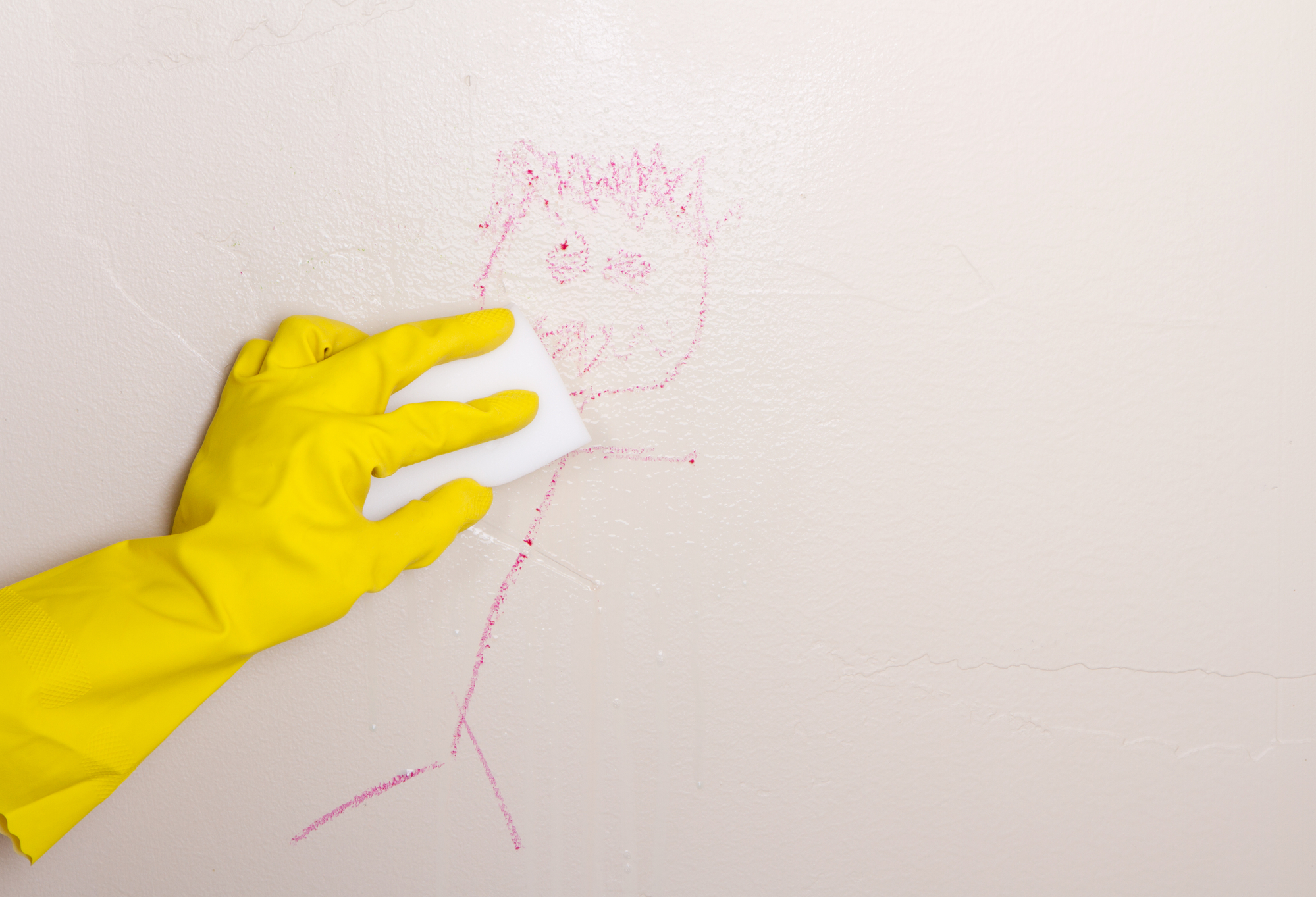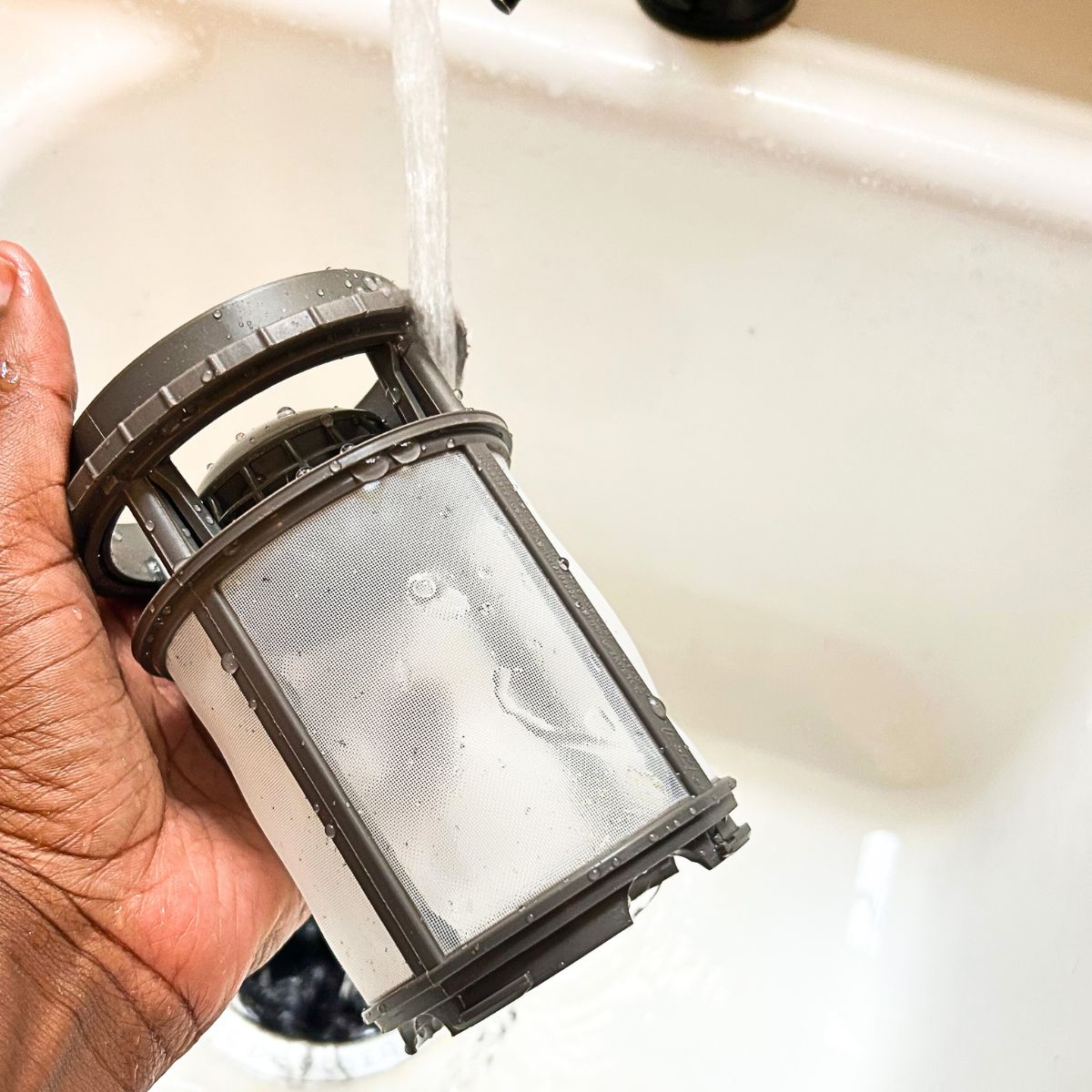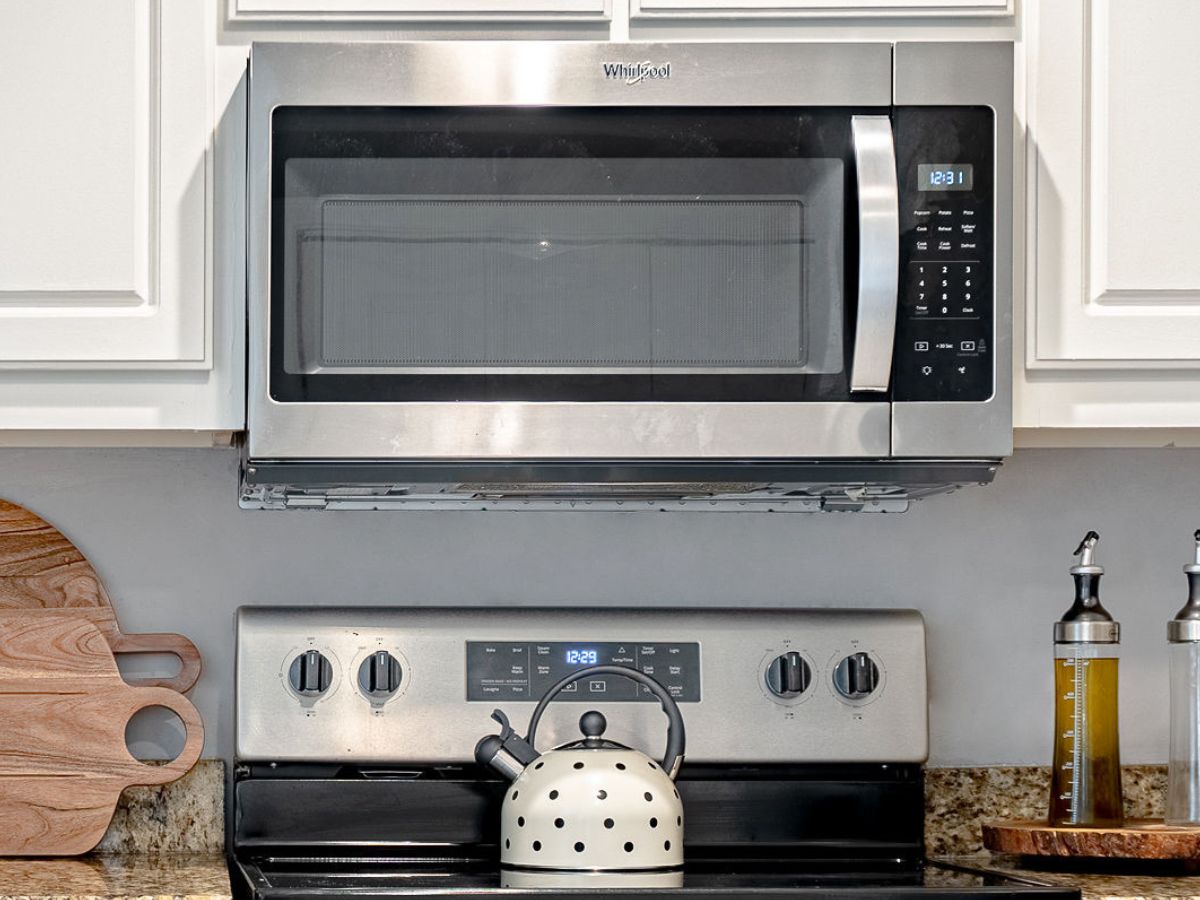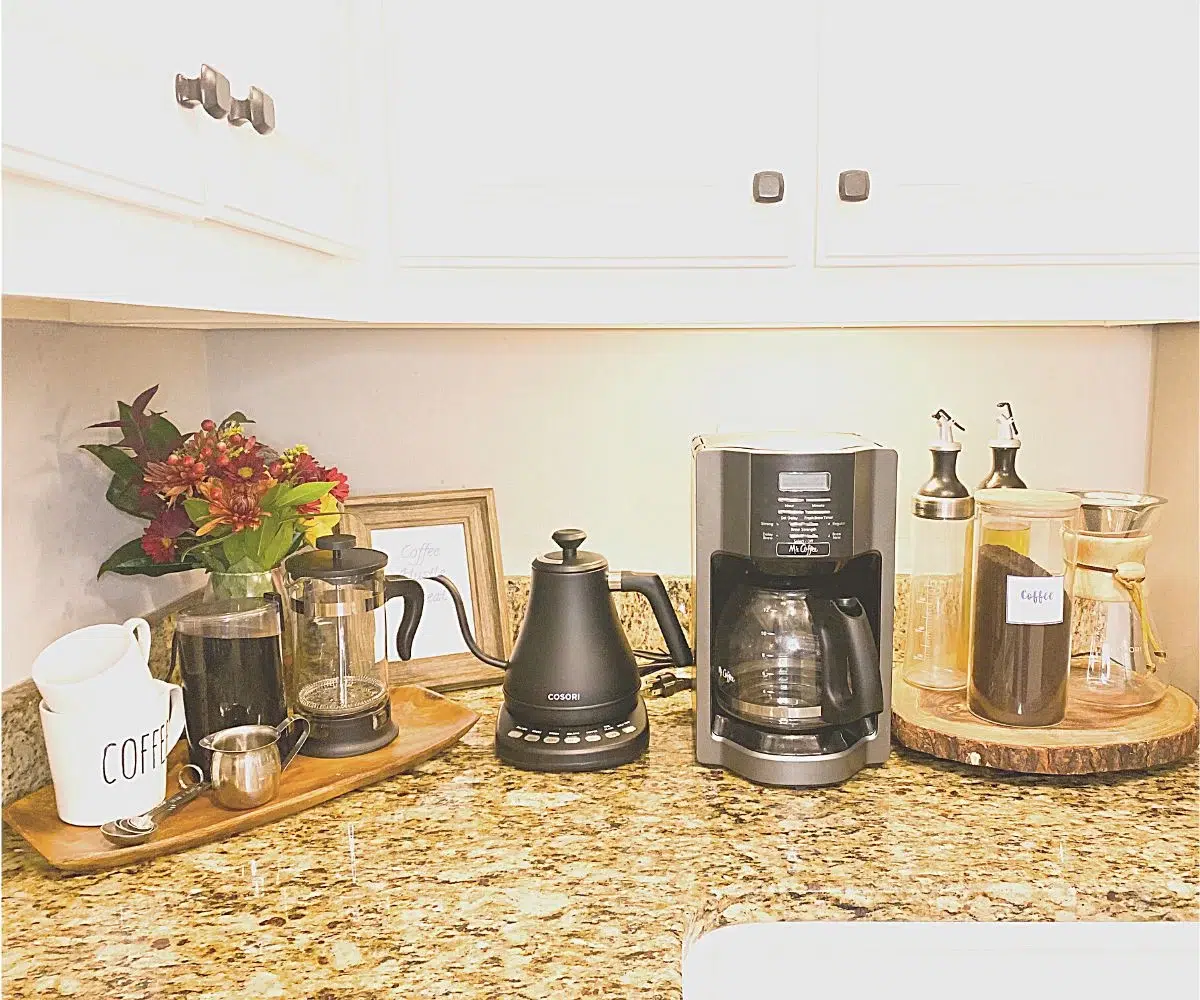This post may contain affiliate links.
I really enjoy using my cast iron pan, but like many people, I sometimes don’t take the best care of it. Cast iron cookware is known for being tough and holding heat well. But they work best when they’re looked after properly, as neglect and poor care can lead to rust and loss of the non-stick surface.
That’s where seasoning comes in. All cast iron pans need proper seasoning. It’s good practice to season your pan after cooking something that requires a thorough cleaning or after you’ve revived a rusty cast iron pan.
Seasoning cast iron may seem a bit more involved than caring for other types of pots and pans, but it’s actually quite easy to do. Let me guide you through a simple and effective way to reseason your cast iron pan each time you need to.
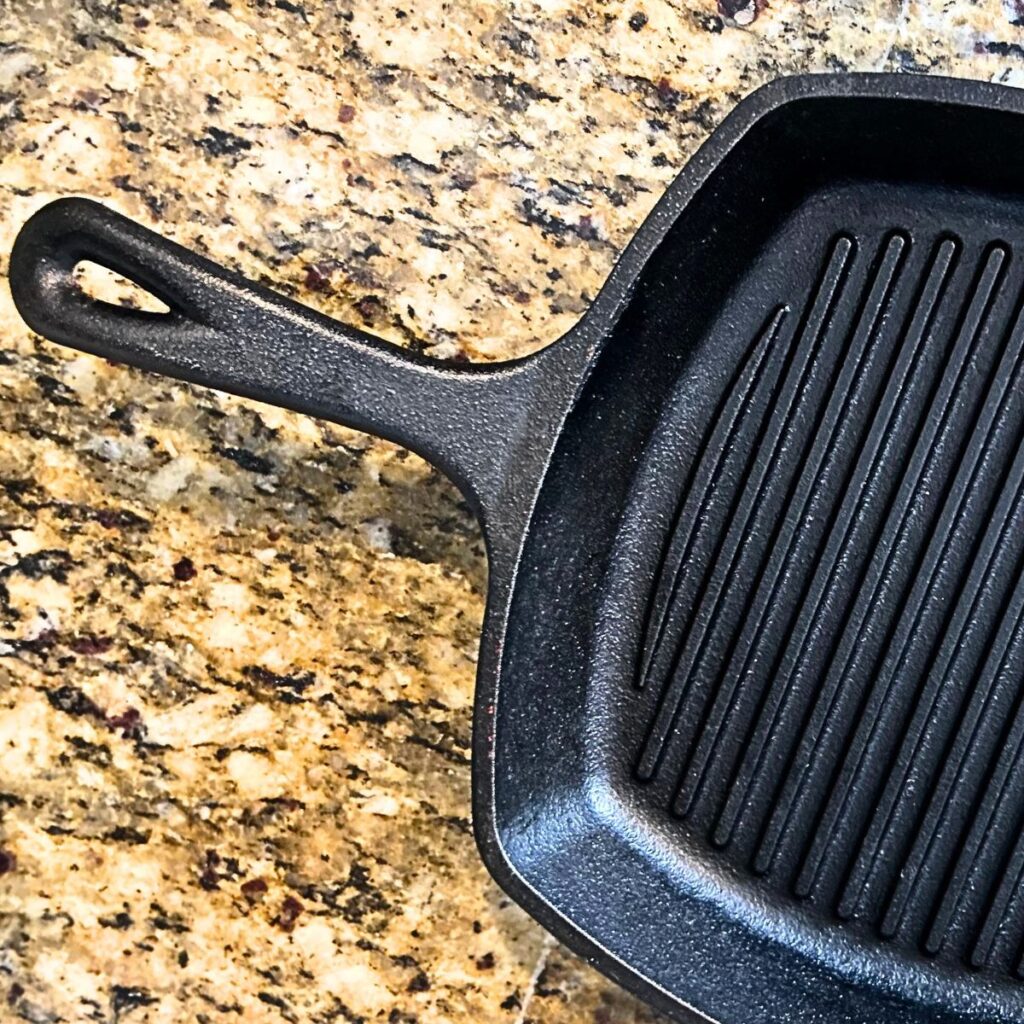
This post may contain affiliate links, which means I will earn a small commission if you purchase through my link. Please see the full disclosure and privacy policy for more information.
Why reseason your cast iron?
Cast iron cookware has been a kitchen essential for generations, possibly even a favorite in your grandmother’s collection. Its unique ability to distribute and hold heat evenly makes it a versatile option for cooking a variety of dishes. However, as time goes by, cast iron can develop rust and lose its non-stick surface, which affects its performance in the kitchen. This is where reseasoning and restoring come into play.
When you reseason and restore your cast iron, you’re giving it a fresh start by creating a new non-stick surface and protecting against rust. This process involves addressing any existing rust, thoroughly cleaning the cast iron, and applying a layer of oil or fat to create a protective barrier. The result is an improved performance from your cast iron and a longer lifespan for this essential kitchen tool.
Guide to Seasoning Your Cast Iron
Supplies Needed
- Cast iron grill pan or cast-iron skillet – this is the one I have: Lodge Cast Iron Square Grill Pan.
- Paper towel
- Cooking oil – Choose oil with a high smoke point, such as vegetable, canola, or flaxseed oil.
- Oven
- Oven mitts
Step 1: Clean it
Before you season your cast iron, you will need to clean it. You can clean it with a scrub brush or sponge. If it has rust, follow this step-by-step guide on cleaning and removing rust from the cast iron pan.
Step 2: Oil it down
Make sure the cast iron pan is completely dry, and then apply a thin layer of oil. You can use your preferred cooking oil here, including vegetable, canola, olive, or flaxseed. Use a dry paper towel and apply it all over the pan, including the sides, handle, and bottom.

Try not to add excess oil during the seasoning process. Applying too much oil can result in a sticky or gummy surface. Always use a thin and even layer to ensure proper seasoning.
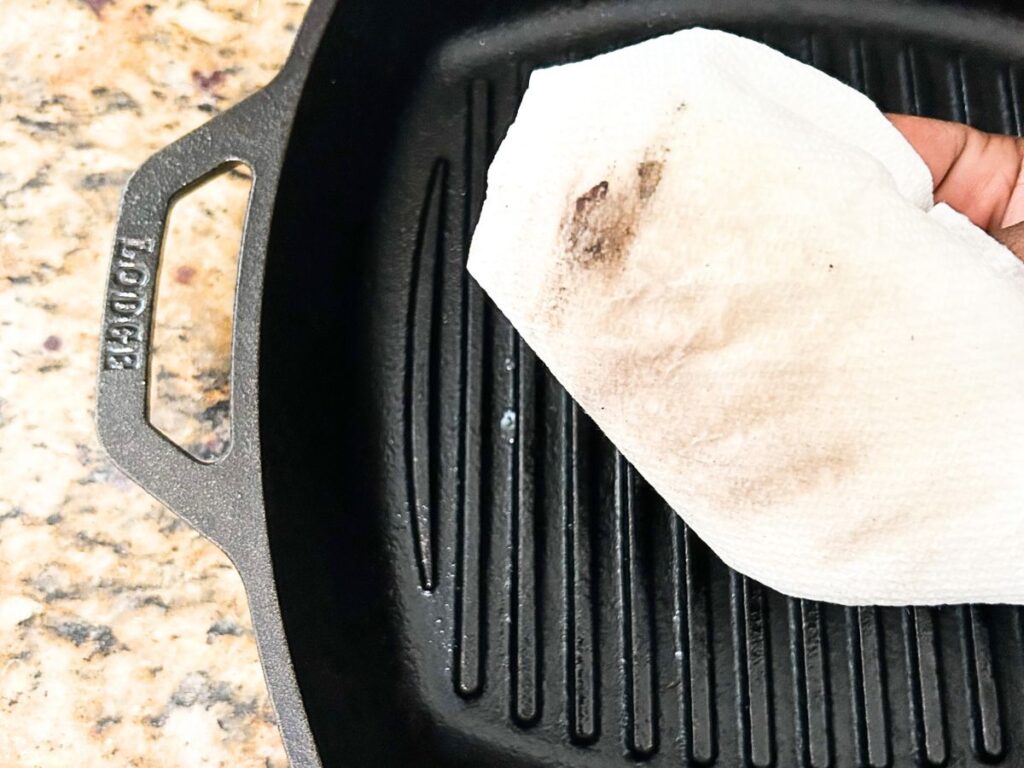
Step 3: Preheat your oven
Preheat the oven to 400°F. This is the minimum required temperature to season the cast iron pan properly.
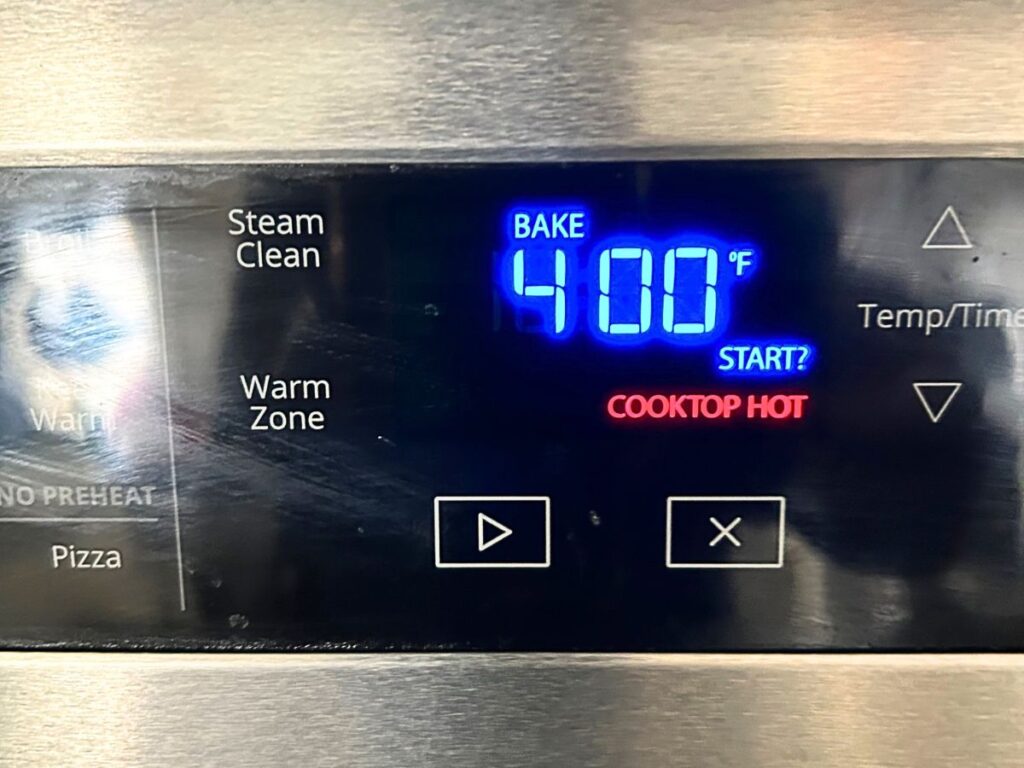
Step 4: Heat the cast iron pan
Place the cast iron pan in the oven and heat it for about one hour. Place it on the bottom rack of the oven. This will allow the oil to create a protective layer.

Step 5: Let the cast iron cool
Remove it from the oven with an oven mitt and place it on the stove or trivet. Allow the cast iron pan to cool. Once it is cool, it is ready to be used again. You’ll notice that it has a shiny, non-stick surface that is perfect for cooking.
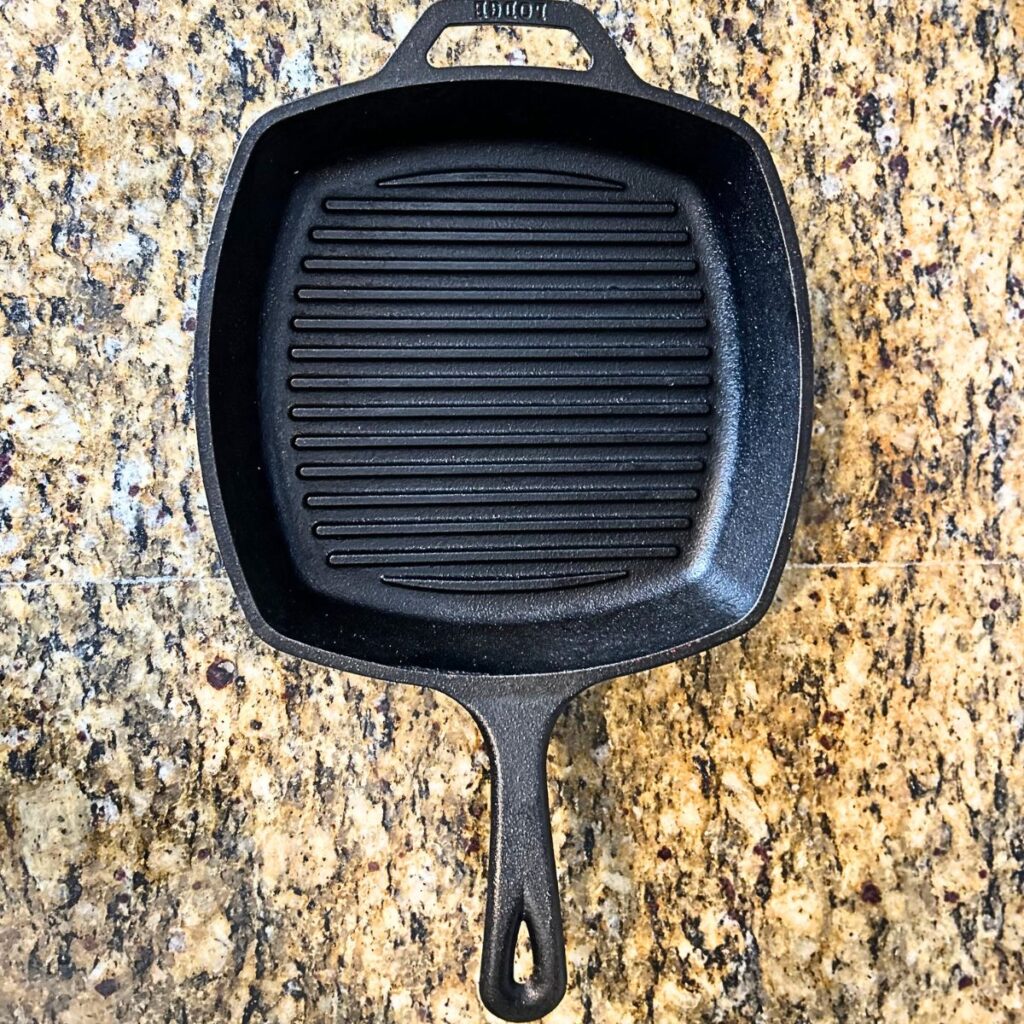
Tips for maintaining your seasoned cast iron
- Do not use a dishwasher. Cast iron grills are not technically dishwasher safe. A Dishwasher will break down the seasoning and soak it for a long time. Instead, wash it by hand in a sink and wipe it clean after use with a paper towel.
- Do not keep it in the sink immersed in water. Keeping it immersed in water will guarantee rust and removal of the seasoning.
- Do not let it air dry. Dry it thoroughly after each clean with a paper towel.
- Keep it seasoned – Apply a protective layer of oil after each clean to create a protective barrier.
- Try to put a paper towel between the pan and anything you place it on in the kitchen cabinets.
- Store in a dry place – Keeping the cast iron dry will prevent rusting.
- If the cast iron skillet comes with a lid, do not store it with the lid on. The lid can trap moisture from the air between the lid and the pan, resulting in rust.
- Avoid cooking acidic goods if your cast iron pan has not been fully seasoned.
What is the best oil to season a cast iron skillet?
There are various oils that can be used for the purpose of reseasoning. The choice of oil or fat depends on personal preference and the desired outcome.
Avoid oils with low smoke points, as they can break down and become sticky at high temperatures.
How often should I reseason my cast iron pan?
It’s recommended to reseason your cast iron skillet after each intense clean or whenever you notice the non-stick surface deteriorating.
Can I use soap to clean my cast iron skillet?
While it’s best to avoid using soap when cleaning cast iron, a small amount of mild dish soap can be used if necessary. Just make sure to rinse it thoroughly and dry it completely afterward.
Can I use my reseasoned cast iron skillet on an induction cooktop?
Yes, cast iron is compatible with induction cooktops. Just make sure the bottom of your skillet is flat and smooth to ensure proper contact with the cooktop.
What if my cast iron skillet develops rust after reseasoning?
If your cast iron skillet develops rust after reseasoning, it’s likely due to improper drying or storage. Simply remove the rust with a proper clean, reseason the skillet, and ensure it is completely dry before storing.
How do you clean it after each use?
Contrary to your beliefs, once you have restored the pan, try not to reach for the dish soap to clean it immediately. Instead, the easy way to clean it is to rub the pan with coarse kosher salt to remove cooking debris and food particles. Use a non-scratch scouring pad or grill brush to fit and scrub between the grates with hot water.
You can certainly use mild soap for tougher jobs, but sparingly. Then, use a paper towel or clean cloth to dry it thoroughly, and then add a little oil to maintain the seasoning.
Posts you may like:
- How to Clean a Porcelain Kitchen Sink
- How To Clean a Glass Stove Top
- How to Clean a Microwave
- How to Clean a Coffee Maker
And there you have it, a guide on how to best season your cast iron grill pan. I hope you have found these simple steps helpful. By reseasoning your cast iron, you can bring it back to life and enjoy the benefits of a well-seasoned and non-stick surface.
With proper care, your cast iron skillet can become a cherished heirloom that will last for generations. Take the time to reseason and restore it, and get ready to rediscover the joy of cooking with cast iron.
I’d love to hear your thoughts about this article, so leave a comment below.
Follow me on my social media pages – Pinterest and Instagram or subscribe to my mailing list for other design inspiration and home decor ideas.
Tamara White is the creator and founder of The Thrifty Apartment, a home decor and DIY blog that focuses on affordable and budget-friendly home decorating ideas and projects. Tamara documents her home improvement journey, love of thrifting, tips for space optimization, and creating beautiful spaces.
